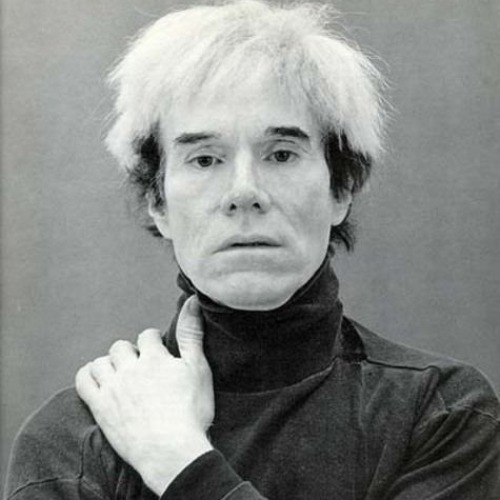Warhol
The youngest child of three, Andy was born Andrew Warhola on August 6, 1928 in the working-class neighborhood of Oakland, in Pittsburgh, Pennsylvania. Stricken at an early age with a rare neurological disorder, the young Andy Warhol found solace and escape in the form of popular celebrity magazines and DC comic books, imagery he would return to years later.
Work came quickly to Warhol in New York, a city he made his home and studio for the rest of his life. Within a year of arriving, Warhol garnered top assignments as a succesful commercial artist. After establishing himself as an acclaimed graphic artist, Warhol turned to painting and drawing in the 1950s, and in 1952 he had his first solo exhibition at the Hugo Gallery, with Fifteen Drawings Based on the Writings of Truman Capote. As he matured, his paintings incorporated photo-based techniques he developed as a commercial illustrator. The Museum of Modern Art (among others) took notice, and in 1956 the institution included his work in his first group show.
The turbulent 1960s ignited an impressive and wildly prolific time in Warhol’s life. It is this period, extending into the early 1970s, which saw the production of many of Warhol’s most iconic works. Building on the emerging movement of Pop Art, wherein artists used everyday consumer objects as subjects, Warhol started painting readily found, mass-produced objects, drawing on his extensive advertising background. When asked about the impulse to paint Campbell’s soup cans, Warhol replied, “I wanted to paint nothing. I was looking for something that was the essence of nothing, and that was it”. The humble soup cans would soon take their place among the Marilyn Monroes, Dollar Signs, Disasters, and Coca Cola Bottles as essential, exemplary works of contemporary art.
Operating out of a silver-painted, and foil-draped studio nicknamed The Factory, located at 231 East 47th Street, (his second studio space to hold that title), Warhol embraced work in film and video. He made his first films with a newly purchased Bolex camera in 1963 and began experimenting with video as early as 1965.During this time he also expanded his interests into the realm of performance and music, producing the traveling multi-media spectacle, The Exploding Plastic Inevitable, with the Velvet Underground and Nico.
In 1968 Warhol suffered a nearly fatal gun-shot wound from aspiring playwright and radical feminist author, Valerie Solanas. The shooting, which occurred in the entrance of the Factory, forever changed Warhol.
The traumatic attempt on his life did not, however, slow down his output or his cunning ability to seamlessly infiltrate the worlds of fashion, music, media, and celebrity.
His artistic practice soon intersected with all aspects of popular culture, in some cases long before it would become truly popular. He co-founded Interview Magazine; appeared on television in a memorable episode of The Love Boat; painted an early computer portrait of singer Debbie Harry; designed Grammy-winning record covers for The Rolling Stones; signed with a modeling agency; contributed short films to Saturday Night Live; and produced Andy Warhol’s Fifteen Minutes and Andy Warhol’s TV, his own television programs for MTV and cable access.
In 1984, Warhol collaborated with the young artists Jean-Michel Basquiat, Francesco Clemente, and Keith Haring. Warhol returned to painting with a brush for these artworks, briefly abandoning the silkscreen method he had used exclusively since 1962.
Warhol’s final two exhibitions were his series of Last Supper paintings, shown in Milan and his Sewn Photos (multiple prints of identical photos sewn together in a grid), exhibited in New York. Both shows opened in January 1987, one month before his death.
http://www.warholfoundation.org/legacy/biography.html
http://www.warhol.org/collection/aboutandy/
-
NombreAndy Warhol





